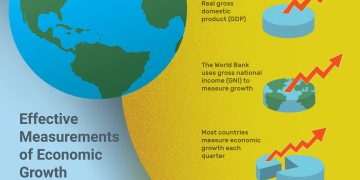In the grand chessboard of global economics, the United States has emerged as the king’s square for foreign direct investment (FDI), while offshore financial centers experience a strategic retreat in their share of the global FDI landscape. This pattern, highlighted by the latest Coordinated Direct Investment Survey (CDIS) results from the International Monetary Fund (IMF), indicates a shift in the gravitational center of international investments.
The American Magnet
In 2021, the United States boasted the most significant increase in FDI inflows among all economies, with its position swelling by $506 billion, a robust 11.3% uptick. Among the 112 economies reporting data, the average FDI inflow growth was 7.1% in local currency terms. However, when recalculated in U.S. dollars, due to the currency’s recent fortification, the global increase stood at a modest 2.3%.
As this week’s charts illustrate, the United States now reigns as the premier haven for global FDI, with China ascending to the third spot. The data also spotlights smaller economies punching above their weight, landing in the top ten despite their GDP rankings trailing behind.

Decoupling of FDI and Real Economy
The FDI figures present a paradox, as they often decouple from the tangible economy. Essentially, these are financial statistics reflecting cross-border capital flows and positions where one entity holds, directly or indirectly, more than 10% ownership of another. Such FDI flows may culminate in investments in a country’s productive activities, like new factories and machinery. Still, they can also represent purely financial investments with scant ties to the real economy.
For instance, many multinational corporations establish special purpose entities in offshore financial centers, where funds merely pass through on their way to their ultimate destinations. These entities are typically set up to reap tax or regulatory benefits, exerting a relatively minimal impact on the host economy but significantly inflating its FDI figures.
Research by Damgaard, Elkjaer, Johannesen, Lane, and Milesi-Ferretti has underscored the significant role of offshore financial centers in global FDI statistics. Even in the years following the 2008 financial crisis, their FDI figures continued to swell. The latest CDIS data indicates that while the share of offshore financial centers in global FDI remains high, it has been on a downward trajectory since 2017, giving way to increases in the shares of major economies like the United States and China.
The precise drivers of this shift are challenging to pinpoint but may be linked to several policy initiatives. For instance, the decline in the offshore financial centers’ share of global FDI coincides with the aftermath of the United States’ Tax Cuts and Jobs Act of 2018.

This legislation diminished the incentive for entities to retain profits in low-tax jurisdictions and resulted in a substantial repatriation of funds by U.S. foreign subsidiaries. Moreover, ongoing efforts by various international bodies to curb tax avoidance, such as the OECD/G20 Base Erosion and Profit Shifting initiative, may have stemmed some flows toward offshore financial centers.
This underscores the continued necessity of comprehensive and timely statistical figures to better understand these dynamics and aid policymakers in crafting international investment and tax policies. Beyond the CDIS, the IMF has initiated a campaign to collect data on Special Purpose Entities (SPEs), unveiling SPE figures earlier this year. Comprehensive reporting of FDI data by countries is also a key part of the G20 Data Gaps Initiative’s second phase—19 out of 20 member economies have reported this data.
Further policy-relevant data is in the pipeline. The IMF is working closely with its member countries and other international organizations to update the Balance of Payments Manual, enhancing its role in surveillance work and policy analysis.
The CDIS is the only global survey of its kind that focuses on FDI positions, organized annually by the IMF. The database offers detailed data on bilateral FDI relationships between economies, aiming to provide geographical distribution information on worldwide FDI inflows and outflows. This aids in understanding the extent of globalization and supports research into cross-border linkages and spillover effects in an increasingly interconnected world.



































